SEARCH






|
|
|
|


by Editor Lourens Durand
Edited and published by Yvette Depaepe, the 15th of May 2024
'Potatoes' by Bill Gekas
Right at the beginning of photography, George Eastman struggled with wet gelatine plates used at the time in the cumbersome process of taking photographs, until he found a way of producing dry plates in numbers and started up a small factory producing these plates. The venture attracted a businessman, Henry A. Strong, who invested in the emergent business. Together, the two gentlemen started up the Eastman Dry Plate Company and eventually, in 1892, the Eastman Kodak Company was formed. In the interim, however, Eastman replaced the cumbersome dry plates with roll film, to be used in his new Kodak camera, and the rest (as they say) is history.
One of George Eastman’s most famous quotes is:
“Light makes photography. Embrace light. Admire it. Love it. But above all, know light. Know it for all you are worth, and you will know the key to photography.”
Great words, but there are obviously several kinds of light. In this article, I will attempt to address the variety and quality of light, as well as the diverse ways it can be used in photography.
- Hard light
- Soft Light
- Natural light
- Artificial light
HARD LIGHT is when a relatively small, focussed light source is pointed at a subject, especially from close by, creating sharp, harsh shadows with no gradation of light in the shadow area. This kind of lighting is often employed where stark contrasts are sought in a photo to convey a message of harshness.
SOFT LIGHT is when a large, diffused light is placed quite close to the subject to create smooth, gentle graduations of light and shade and a much more mellow, dreamy effect, shaping the subject and creating mood. Interestingly, when a soft light source is moved further away from the subject it becomes less soft, so placing is important.
NATURAL LIGHT
The sun, although celestially a huge body of matter, appears as a relatively small light source in a huge sky, resulting in particularly hard light if trying to photograph in full sunlight. Also causes your model's eyes to scrunch up or squint when posing in full sunlight. A way out is to move the subject into the shade and lighten it by using a large reflector to soften the light.
Soft light can also be emulated outdoors, even on a sunny day, by using a scrim (a piece of fabric, mesh, or netting stretched over a frame) held up between the sun and the subject. The scrim, by the way, can be fairly small or huge as, for example, in an outdoor shot of a new Lamborghini.
Even when shooting indoors you can find natural light, through a window or open doors. Natural window light can be either soft or hard, depending on subject placement and whether a lace curtain is covering the window or not.
ARTIFICIAL LIGHT
The studio photographer, whether shooting portraits, still life, or product photography, is faced with an extremely wide range of lighting types and configurations.
Let’s have a look at some of them:
Open flash heads give a particularly hard light spread over a large area. They can be fitted with a reflector, which would normally narrow down the light down to 90°, but still a hard light. Another common adaptor used on a flash head is a snoot, which is a conical contraption fitted to the flash, narrowing the beam down to highlight small areas. It is often used in portraiture from behind the subject as a rim light to highlight the hair. In still life and product photography the snoot would assist in preferentially highlighting areas of special interest, such as a bottle label.
Soft-boxes are light modifiers that give an exceptionally soft light and diffuse shadows. A soft-box is normally a square or oblong structure, 60cm or larger on the edge, with one or two layers of diffusion material in front of the light source and reflective sides internally that help to give a fair amount of directionality. It is often the go-to lighting for photographers and is widely used. On the downside, when used in portraiture, the catchlights in the model’s eyes are square or oblong, which can be a problem for some.
Strip-lights are longer, thinner versions of a soft-box allowing the photographer to light the full body of a standing model. They are also used for special effects in other genres of photography.
Octa-boxes are similar to soft-boxes but have eight sides and are somewhat larger. Because of their size, octa-boxes can produce a really soft light. They are generally foldable and can be set up quicker than a soft-box. Their other advantage is that the catchlights in the eyes of the model are round. Outside of portraiture, there is not really any advantage over soft-boxes.
Umbrellas are more portable and more easily assembled than soft-boxes, which can be a benefit when travelling off-site. The white umbrellas can be used either as shoot-through or reflective light sources. When using a shoot-through approach, the umbrella can be positioned quite close to the model, giving a nice soft light (although not as soft as a soft-box). If used as a reflective light source, the umbrella is turned around and the light source is facing away from the model and at a greater distance, resulting in some light fall-off. One does get umbrellas that are silvered on the outside, and this reduces the fall-off somewhat. The catchlight in the eyes of the model is round (compared to that when using a soft-box), but the reflected shafts of the umbrella are not that attractive.
Beauty Dishes give a different look to soft-boxes. They are designed for use at close distances and yield a special, focused light that has a unique, subtle wrapping effect that shapes the model’s face in a way different from that of soft-boxes. The beauty dish has a bowl shape, with a small reflector centred in the front, facing the light source. This reflector bounces the light from the light source back onto the bowl, which then bounces the light back outwards onto the model.
Flags and reflectors are not really light sources but are useful in blocking off light on selective areas, such as when avoiding glare off glassware or brass ornaments in still-life setups, or on reflecting additional light into darker shadows on the subject. They can be large or small black cardboard sheets in the case of flags, or white Styrofoam sheets, white cards, or aluminium foil used as reflectors.
STUDIO PORTRAITURE LIGHTING SETUPS
There are obviously an infinite number of ways that these individual lights and combinations can be used in a studio setup, but here are some of the more common, tried and tested setups, all relying on positioning of the light sources relative to the model.
Split Lighting - This lighting scheme results in a small, soft shadow of the subject’s nose on the cheek. The model typically stands or sits with his or her body slightly turned away to the photographer’s right. A single light source is placed in line with, or slightly behind the model, on the left side, and its intensity adjusted to give the desired exposure. The camera itself would be set on ISO125, 1/120 sec shutter speed, and exposure at F/11 or so as a start. In some cases, it may add an extra bit of zip if a snoot is placed behind the model, on the opposite side of the main light.
Rembrandt Lighting – Rembrandt light is so called because it was extensively used as natural lighting by Rembrandt in his portraits, including his self-portrait, and is quite dramatic (the effect is said to be due to the shape of his studio, with a window as the only light source, high up on the left-hand side of the artist). The effect is typified by a small triangle of light on the subject’s cheek on the shadow side. The eye on the shadow side must have some light, or else the picture looks unbalanced. The main light is to the left of the photographer, slightly more forward than with split lighting, and also higher up so that the shadow of the nose falls down the cheek. It is a good idea to have a reflector on the opposite side of the light, or maybe even a fill light at low intensity slightly to the photographer’s right. The purists say that the triangle of light should be no longer than the nose and no wider than the eye.
Loop Lighting – Loop lighting is very similar to Rembrandt light, except that the main light is moved slightly backward (towards the photographer) to a 45-degree angle with the model, which results in the shadow of the nose forming a slight loop below and to one side of the nose.
Butterfly Lighting – Here the main light source is directly above the subject so that the photographer is shooting almost underneath the light source, resulting in a butterfly-shaped shadow below the nose. This lighting setup is frequently used in glamour shots, because it is quite flattering, and works particularly well with a Beauty Dish.
Clamshell Lighting – Similar to Butterfly Lighting, except that a large reflector is placed below the subject and facing upwards, helping to soften the shadows under the chin, nose, and eyes.
In conclusion, I hope that this article goes some way in helping to understand the quality of light, the variety of equipment available, and how to use it creatively in progressing in the art of photography, as exemplified in the following selection of photos from 1X.com photographers.
'Mahya' by Ali Shahraki
'Floral' by Q liu
Untitled by Katsuhiro Kojima
'Katya' by Valeriy Kasmasov
'Brothers' by deskounlmtd
'Bo' by Lifeware
'Autumnus' by Bill Gekas
'Midnight Story' by Alfredo Yañez
Elderly smoker' by Sergio Pandolfini
'Abah' by Andi Halil
'Portrait' by JAE
'hair wash day' by kenp
'HER WORLD....' by Tjipto Suparto
'Oksana' by Zachar Rise
'PossessioN' by Emerald Wake
* by Robert Maschke
Untitled by Robert Becke
'Sylwia' by Jaroslaw Saternus
Pears' by Bill Gekas
 | Write |
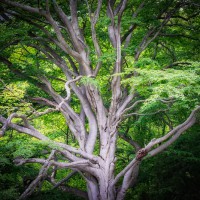 | Cristiano Giani PRO ...wonderful images and interesting text...
Many thanks... |
 | Lourens Durand CREW Thank you. |
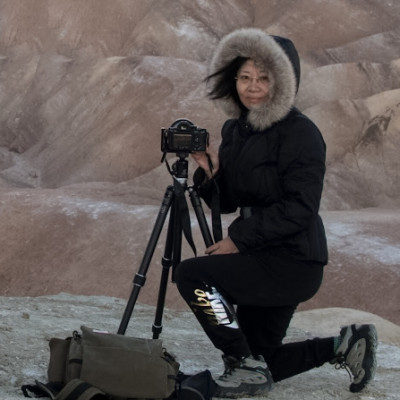 | Linda Lu PRO Great article and beautiful photos! |
 | Lourens Durand CREW Thank you. |
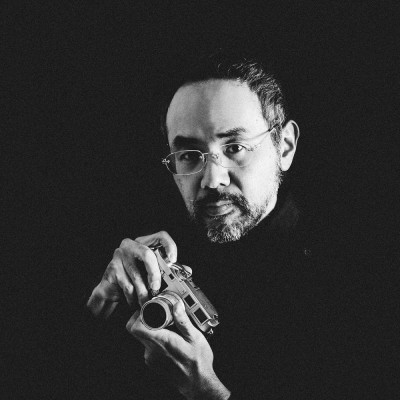 | Eiji Yamamoto PRO Thank you so much for the wonderful and helpful article with great photos! |
 | Lourens Durand CREW Thank you Eiji. |
 | Francisco Goncalves PRO Excellent Portraits. Yes, Light is the key... Light and shadows work like a marriage. |
 | Lourens Durand CREW Too true. |
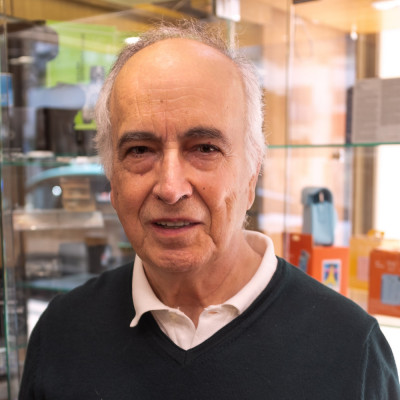 | Jorge Ribeiro Lume PRO Obrigado |
 | Lourens Durand CREW You are welcome. |
 | Vasil Nanev PRO Brilliant and very interesting article, thank you so much! |
 | Lourens Durand CREW Thank you Vasil. |
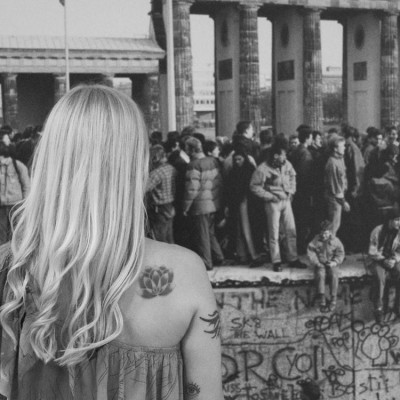 | Gabriela Pantu PRO Great article and wonderful pictures! Congratulations and thank you for sharing! <3 |
 | Lourens Durand CREW Thank you Gabriela. |
 | Katsuhiro Kojima PRO Thank you for sharing a pic. |
 | Lourens Durand CREW You are welcome. |
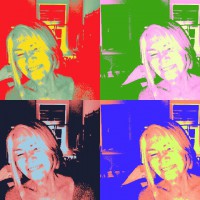 | Jane Lyons CREW Thank you for such a complete and informative article on light and for the great photography to illustrate it. |
 | Lourens Durand CREW Thank you Jane. Much appreciated. |
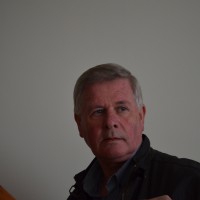 | Ray Clark PRO Brilliant article and great models. |
 | Lourens Durand CREW Thank you so much Ray. |
 | Asuncion Salmeron PRO It's been a while since I've seen such an interesting and instructive topic on the page. It is a complete compendium on photography. Beautiful and good photos chosen for the topic. Many thanks to the editor Lourens Durand,
Warm greetings. |
 | Lourens Durand CREW Thank you so much Asuncion, and warm greetings. |
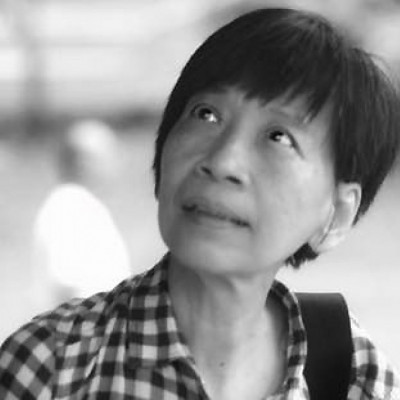 | Pang Teng Lin PRO Beautiful work . Thank you for sharing |
 | Lourens Durand CREW Thanks, and you are welcome. |
 | Colin Dixon CREW Interesting article on the beauty of light and how it is created and used by us all . Wilh amazing photographs to illustrate. :) |
 | Lourens Durand CREW Thank you Colin. |
 | Yvette Depaepe CREW Interesting and fine article, Lourens. Thanks for sharing it with the readers. Cheers, Yvette |
 | Lourens Durand CREW Thank you Yvette. It's only a pleasure. |